-
TrackoBit
Manage commercial vehicles with the new-age Fleet Management Software
TrackoBit -
TrackoField
Streamline your scattered workforce with Field Force Management Software
TrackoField -
Features Resources
About Us
Get to know TrackoBit: our team, ethos, values, and vision.Careers
Join the most dynamic cult of coders, creatives and changemakers.Tech Support
Learn about our technical support team and services in detail.Events
Check out the exhibitions where we left our marks and conquered.
Contact Us
Connect with us and let us know how we can be of service.
What is Dynamic Routing in Logistics? Benefits & How it Works
- Author:
- Read Time:7 min
- Published:
- Last Update: August 22, 2024
Categories
Table of Contents
ToggleCategories
- Video telematics
- TrackoField Industries
- Route Planning
- TrackoMile
- Driver Behaviour
- Last Mile Delivery
- Asset Tracking
- Dispatch Management
- Fuel Management
- Route Optimisation
- Electric Vehicle
- Roster Management
- Vehicle Tracking
- TrackoMile Industries
- TrackoBit Industries
- More
- Sensor Integration
- Topical
- GPS Trackers and Hardware
- Tech and Beyond
- TrackoField
- What's New
- Employee Management
- Company
- Field Sales And Service
- Telematics
- TrackoBit
- Task and Workflow
- Miscellaneous
- GPS Software
- Lead Management
- Fleet Management
- Leave And Attendance
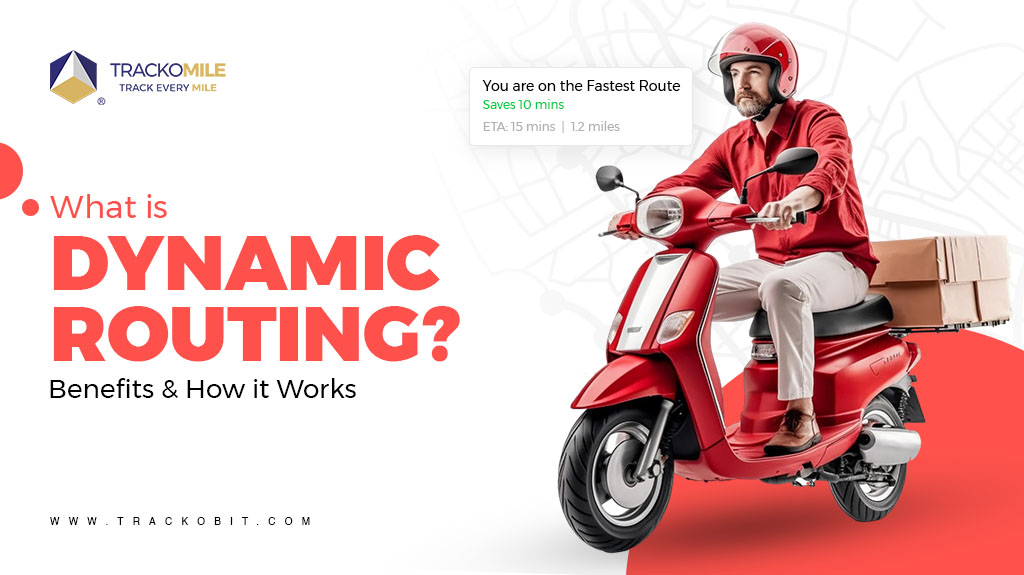
Dynamic routing is the best method to find the most efficient routes. Check out how dynamic routing backed last mile delivery solutions work and help improve delivery times.
Table of Contents
Toggle
Fixed delivery routes in the last leg became a complete no-no ever since customer demand became too frequent, dynamic, and unpredictable. The rise of the concept of at-home deliveries made the last leg of businesses realize the potential to change and outdo static route planning methods. This is where they discovered – dynamic routing solutions.
This new paradigm shift has given businesses scope to cut operating costs and delivery times. Earlier, it was impossible to change or adjust routes in real-time, but now it’s easy to alter routes to avoid traffic congestion, weather anomalies, and missing delivery windows. All thanks to dynamic routing solutions.
Let’s understand in detail dynamic routing, how it works, and how it benefits last-leg businesses by optimising dispatch and delivery times.
What is Dynamic Routing in the Last Mile?
Dynamic routing in logistics (the opposite of static routing) helps optimize delivery routes in real-time based on factors like traffic, weather, delivery priorities, and more. It uses intelligent algorithms to improvise routes dynamically, which further helps reduce delivery times and ensure first-attempt deliveries.
It’s nothing like static routing where every schedule is fixed and the route is pre-defined. Dynamic routing flexibly lets dispatchers adjust the routes as per new orders, delays, cancellations, or emergencies.
Dynamic routing involves leveraging advanced algorithms and software that can analyze multiple variables, such as:
- Vehicle capacity
- Driver’s availability
- Customer’s preferences
- Delivery windows or priority
- Traffic conditions
- Time on the road or fuel consumption
- And other 100s of factors
In short, it generates optimal or near-optimal routes that minimise operational costs and maximize service levels.
Dynamic Routing Fits Best for:
|

| Do You Know?
Businesses that use dynamic routing and AI are saving up to 25% of costs and are able to reduce CO2 emissions by 30%. Such routing is the best way to reduce travel time and fuel costs. |
Top Advantages of Dynamic Routing
(Last Mile Dispatchers Experiences)
Dynamic routing offers several visible benefits to last mile supply chain or logistics operations. One such great advantage of picking efficient routes after calculating demand and constraints is — cost reduction. When you can re-route your vehicle towards short, time-saving routes, you reduce time on the road and save on fuel costs.
You even get to improve customer satisfaction as you meet deliveries within defined time windows andETAs. Don’t forget how you reduce all-mile delivery. One great advantage of picking efficient routes after calculating demand and constraints is cost reduction. When you can reroute your drivers’ driving time and stress, it will lead to their continued association with your business.
On top of that, how can we forget increased sustainability and lowering CO2 emissions – when your vehicles are travelling less on the road?
Not just that, you also get…
- Time to schedule resources for fulfilling more orders or deliveries.
- Opportunity to increase rider productivity to fulfill extra deliveries in working hours.
a.) Higher On-time Dispatch & Delivery Times
Dynamic routing-based last-mile delivery software is intelligent enough to adjust routes according to real-time traffic, weather, and other 100+ conditions. This helps riders reroute on efficient and shorter routes, reducing delays and ensuring higher on-time dispatch and delivery rates.
b.) ETAs are Short (& Easy to Share with Customers)
The best thing about dynamic routing algorithm-based software is that it optimises driving routes and generates dynamic ETAs accordingly. These ETAs are easy to share directly with customers.
c.) Reduced Operational Time & Costs
Having last-mile routing software ensures that the dispatching team doesn’t waste time manually planning the delivery dispatching and routing plan. This allows them to save time and focus more on strategic tasks.
On the flip side, when the drivers take the most optimised routes, operational costs are reduced in the form of reduced fuel consumption. This eventually reduces travelled miles and also checks unnecessary maintenance costs.
It’s like increasing efficiency to manage more deliveries per rider’s shift. Saved driver time can be used to pursue more deliveries.
How Dynamic Routing Works? A Complete Walkthrough
Dynamic routing collects and processes data from order dispatch management system and tracking tools, optimisation models and algorithms, GPS tracking features in smartphones, and weather forecasts. All just to compile the most efficient route for both vehicle and driver.
The most popular optimization models operate by taking the following factors into account:
- Distance between warehouse to delivery addresses
- Duration of delivery window
- Driver schedule and bandwidths
- Estimated fuel consumption
- Customer expectations and satisfaction
- Revenue or profit margins
The algorithms used in the dynamic routing process are based on different techniques, such as machine learning, linear programming, or heuristic methods.
Use Case Time!Here’s How DHL Utilises Dynamic Routing Big brands like DHL have leveraged dynamic routing by opting for route optimisation solutions. By applying AI, they have enabled their vans to take detours from specific peak times, which has made their drivers pick an alternative or efficient path. Their leveraged optimisation systems support the best routings by distance and geographical location. They have managed to reduce their delivery times in the first and last mile. |
Challenges of Dynamic Route Planning – The Untold Reality
Dynamic routing is a boon for logistics operations, but it poses several challenges that need to be addressed. A platform like TrackoMile that aligns quality data and ensures 99.9% accuracy is best.
- Dynamic routing thrives on data quality. Any form of miscalculation, error, inconsistencies, or delay can negatively impact route planning and implementation. Thus, it’s best to choose a platform like TrackoMile that aligns quality data and ensures 99.9% accuracy.
- Most route optimisation software in the market isn’t well-programmed to handle complex data and algorithms. They fail to offer seamless integration with the existing system to draw delivery order details. The key is to choose a platform that offers seamless integration and the ability to transform complex data.
- Most of the time, the delivery drivers or riders are often resistant to change. The key is that dispatch managers and operators monitor their riders’ activity, get clear reports, and intervene when necessary.
Here’s a quick follow-up on the difference between static routing and dynamic routing.
Dynamic Routing vs. Static Routing – The Difference
| Variables | Static Routing | Dynamic Routing |
| Criteria | Fixed routing with no scope for real-time adjustments. | Adjusts routes as per real-time traffic, weather, and other 120+ conditions. |
| Data Needs | Relies on static entered locational data. | Relies on real-time advanced routing data. |
| Suitable for | Trip management in the first mile and middle mile. | Last leg of deliveries with dynamic delivery windows and uncalled-for constraints like traffic. |

Ensure On-Time Last Leg Deliveries with TrackoMile
Intelligent delivery with dynamic route planning is a secret sauce to well-timed and cost-efficient last leg deliveries. Get a fully-featured last-mile delivery software that does more than optimising routes. How would you like software that lets you track, monitor, and control all aspects of dispatching, routing, and delivery from a single dashboard?
TrackoMile’s tested route optimisation software makes the last leg the most cost-efficient and on-time with an arsenal of features like:
a.) Real-time Routing Algorithms
Enjoy quick route optimisation through a multi-level rule engine that calculates the best route while calculating vehicle type, capacity, speed, traffic, and many other variables. Our dynamic routing engines offer negligible differences between ETA and the actual time of arrival.
b.) Dynamic Geocoding
You can easily feed delivery addresses in any language with incomplete phrases or information. In return, our software will geocode them into accurate coordinates across geography with NLP and advanced geocoding.
c.) Ad-Hoc Deliveries
Our dynamic routing engines work in real-time when you add or remove waypoints for deliveries during run-time. Modify routes and re-optimize anytime as per peak demand. Our last mile delivery management software will help accommodate every ad-hoc delivery while sustaining customer satisfaction.
d.) Dispatch Planner
Experience flawless dispatch planner that simplifies the process of order allocation and turn-by-turn routing while reducing distance, time, and costs.
e.) Electronic PODs
Choose from multiple types of Proof of Delivery options—OTP, eSign, QR code, or automatic PODs—to ensure successful deliveries.
Read Blog – 5 Benefits of ePOD in Logistics
f.) On-demand Deliveries
Get features to reduce travel time for our scheduled deliveries to subscription and on-demand models. Simplify the process with slot selection and on-point ETAs to avoid first-attempt failures.
Leverage TrackoMile’s software partnership as a stepping stone to experience:
- 28% increase in vehicle capacity utilization
- 10-15% reduction in overall transportation costs
- 40% increase in deliveries per vehicle
- 15% less timing in planning routes and optimally scheduling riders
More Trending Reads:
- Top 10 Strategies for Improving Last Mile Experience
- Top 6 Ways of Improving Last Mile Delivery With Analytics
- Top 5 Driver Management Tips for Last Mile Delivery
FAQs on Dynamic Routing in Logistics
-
What is static routing?
Static routing involves planning, creating, and assigning fixed routes to delivery vehicles. Unlike dynamic routing, this method doesn't suggest rerouting in case of unforeseeable events like traffic congestion or weather changes.
-
What is dynamic routing?
Dynamic routing involves optimising routes in real-time based on traffic, weather, delivery window, and other constraints (that weren’t anticipated before).
-
What are the different types of routing?
In the last leg, routing can be static and dynamic. In static routing, fixed routes and halts are assigned to drivers and vehicles. These routes cannot be altered as in real-life situations. Whereas in dynamic routing, routes aren’t fixed and can be re-adjusted as per delivery deadline, traffic congestion, weather conditions, and more unforeseeable circumstances.
-
How dynamic routing work?
Dynamic routing works in the last mile by recalculating delivery paths in real-time by using traffic, weather, and customer delivery window updates for optimal efficiency.
-
Are dynamic routing and route optimisation the same?
Well, dynamic routing adjusts paths in real-time based on live traffic and conditions, while route optimization starts finding the efficient route or path for delivery initially.
-
What are dynamic routing advantages?
Dynamic routing helps reduce delivery times by rerouting riders on the most optimised routes. This saves time and fuel costs and allows the last leg of businesses to accommodate more delivery capacity.
-
Dynamic routing vs. static routing - which is better?
Dynamic routing unlike static routing alters routes in real-time after foreseeing traffic congestion, weather anomalies, delivery timeframe, and more factors. This helps reduce ETAs and delivery times. It even gives more space to perform extra deliveries for more margins.
Nandita Gupta
Nandita, a digital content lead at TrackoBit, leverages 8+ years of expertise in crafting compelling B2B and B2C content. She specializes in delivering well-researched, solution-focused strategies and writeups for SaaS products in telematics, geospatial tracking, AI, and IoT. When she’s not strategizing, writing, or leading her team, you’ll likely find her diving into new reads, exploring trending topics, or hitting the gym.
Related Blog Test
-
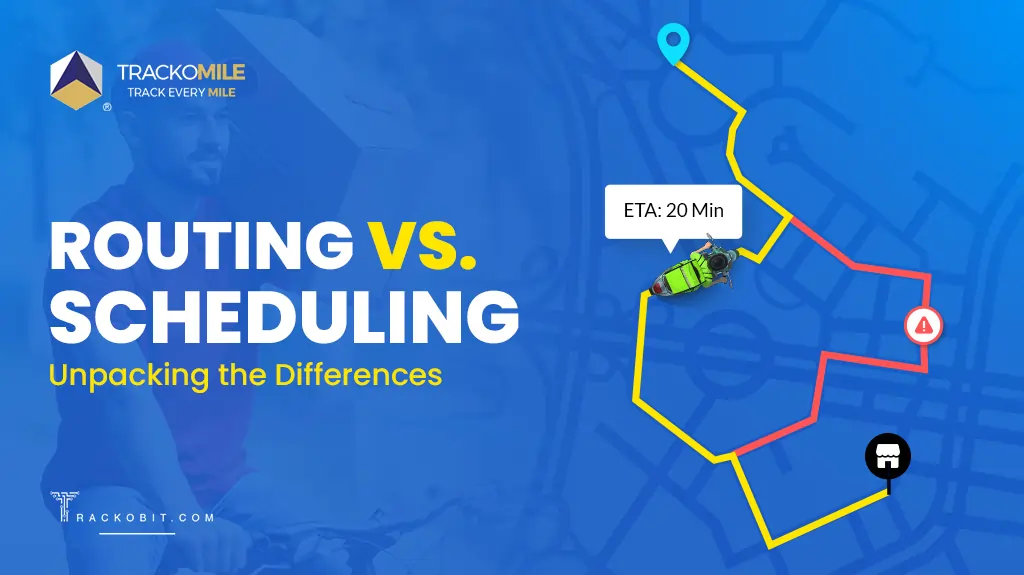
Routing and Scheduling: The Key Differences
Tithi Agarwal 30 August 2024Are you confused between “routing” and “scheduling,” and are you looking for ways to have the best of both worlds? Why not opt for routing and scheduling software that optimizes business operations?
-
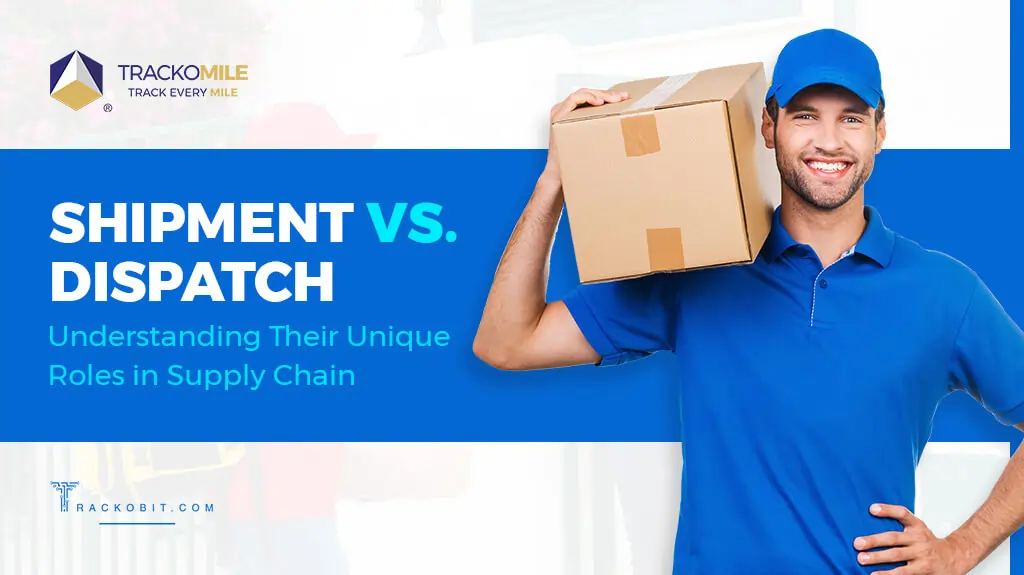
Difference Between Dispatch And Shipment
Tithi Agarwal 27 August 2024Shipment and dispatch are two common supply chain terms that play a huge role. However, they are also the terms people confuse and use interchangeably the most. Let’s eliminate the confusion.
-
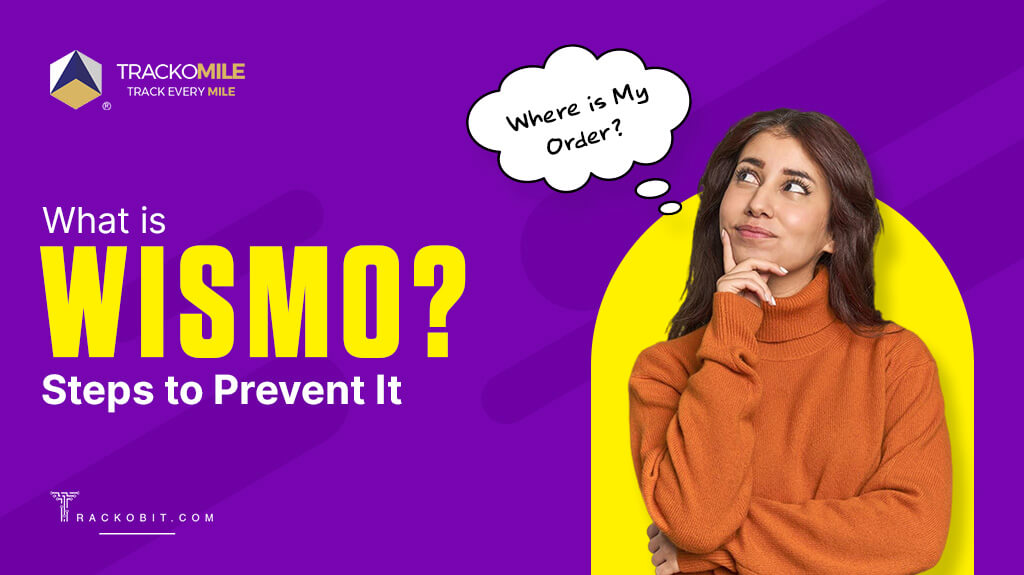
What is WISMO? Unsolving the Mystery
Tithi Agarwal 22 August 2024Reduce WISMO (Where Is My Order) calls and save valuable time and resources by providing customers with real-time order tracking links. This simple solution equips them with the necessary information, minimizing unnecessary inquiries.
-
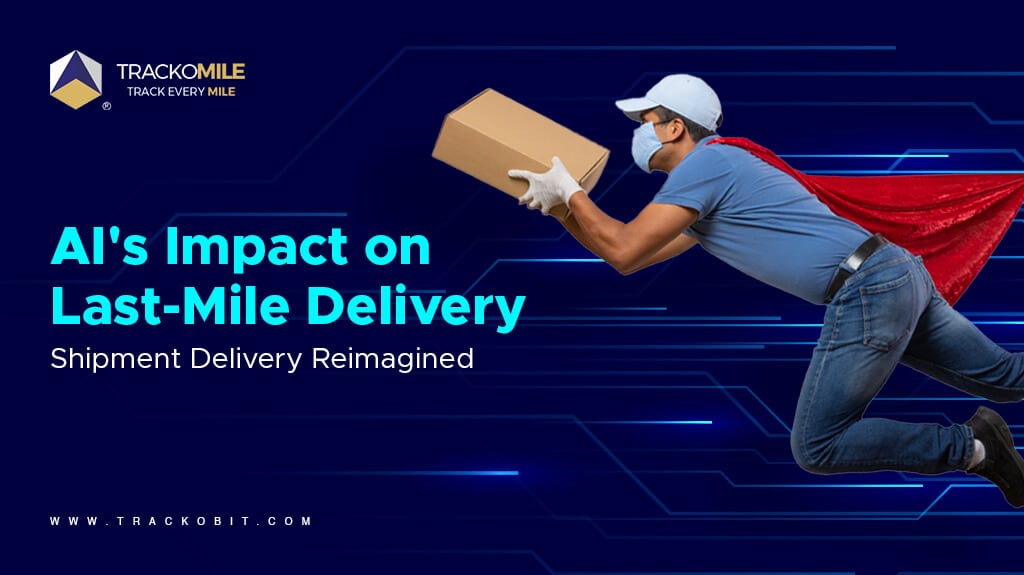
AI in Last-Mile Delivery: 12 Transformative Ways Shipments Reach Customers
Tithi Agarwal 7 August 2024Buckle up because you are stepping into the future: the adoption of AI in the last mile delivery. With its help, you can ensure almost free and same-day delivery to customers.
Thank you for reaching out! We'll speak to you soon.
In the meantime, why not find out more about us, explore our products, or visit our blog?
Stay Updated on tech, telematics and mobility. Don't miss out on the latest in the industry.
Cookie Consent
We use cookies to enhance and personalize your browsing experience. By continuing to use our website, you agree to our Privacy Policy.






























